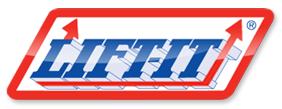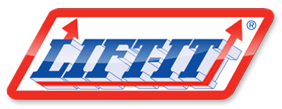Rigger's Checklist, Care & Storage of Slings
|
|
|
|
|
1. Analyze and Measure — Determine the total weight to be moved, as well as exactly how far it is to move and how high it must be lifted.
2. Determine the Hitch — Decide how the load will be rigged and how the sling will grip or be attached to the load.
3. Select the Sling — In addition to adequate Work Load for the angles and hitch involved, slings should be the most suitable for handling the specific load. Select slings with proper end fittings, eye protection, as well as attachment hardware.
4. Inspect the Sling — Thoroughly inspect the sling to determine if it is in acceptable condition and capable of making the lift. Refer to prevailing OSHA and ASME regulations for inspection criteria.
5. Rig Up, Not Down — Always attach the sling to the load first, then attach slings to the lifting device.
6. Check Everything — Before attempting a lift, take a light strain on the rigging to determine that blocking, sling, protection and all safety devices are in place.
7. Stand Clear and Lift — Let the lifting device and rigging do the job—don’t use brute strength to prevent swinging or movement. Use a tagline to control any movement. Keep away from the load when it is suspended.
8. Don’t Shock Load — Lift, move and lower slowly and with a steady application of power.
9. Put It Away! — After you’ve completed the job, check slings and gear for any damage. If damage is present, red tag items immediately and advise the rigging inspector. If the gear is in acceptable condition, return it to storage for safekeeping.
|
|
The amount of care and proper maintenance slings receive will go a long way in determining service life. The guidelines shown on this page have been proven to be most helpful:
|
| |
|
| |
- Sling selection: Type and Capacity
- Load Control
- Lift Point over the CG
- Appropriate Hitch for CG and Load Control
- Coordination of Multiple Slings
- Positive Sling to Load Engagement
- Coefficient of Friction: Sling to Load
- Load is Free to Move and is not Snagged
- Sling Capacity is Adequate (Angle and Tension)
- Adequate Sling Protection
|
| |
|
| |
All wire rope slings should be protected from temperature extremes. The accepted rules are: Fiber Core Slings should never be exposed to temperatures in excess of 180°F or below minus 40ºF. IWRC Wire Rope slings should never be exposed to temperatures above 400°F or
below minus 40°F.
It is not always easy to detect when wire rope has been damaged by heat. The most common visual signs are loss of lubrication and discoloration of wires.
The best practice to follow is that if there is the slightest suspicion that slings were subjected to high temperatures, they should be taken out of service immediately.
|
Lubrication
|
|
|
|
Wire rope is thoroughly lubricated at time of manufacture. Normally, for sling use under ordinary conditions, no additional lubrication is required. However, if a sling is stored outside or in an environment which would cause corrosion, lubrication should be applied during the service life to prevent rusting or corrosion.
If additional lubrication is required, consult the sling manufacturer for information on the type of lubricant to be used and best method of application.
|
|
|

